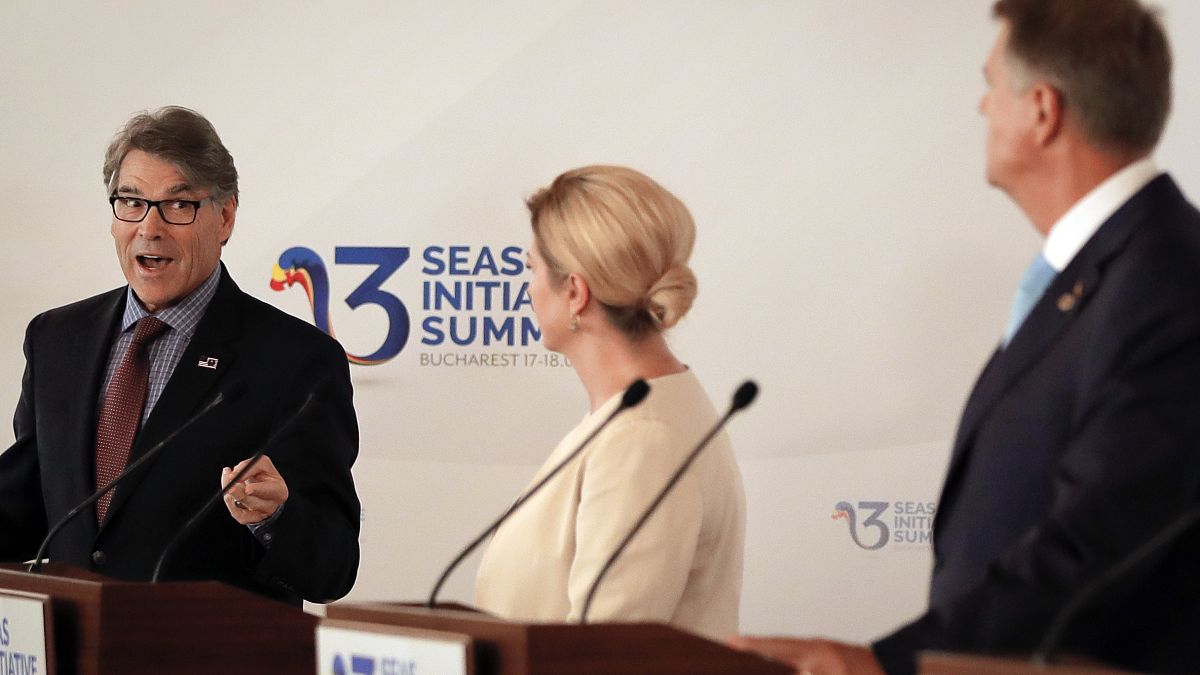Regional leaders are set to meet at a summit hosted by Estonia to discuss improvements to infrastructure and living standards among Eastern European EU members
Better roads and the idea of improved energy networks are among the items on the agenda as ten presidents from eastern EU countries prepare to meet at a summit on Monday.
The Three Seas Initiative (3SI) gathering, hosted this year by Estonia, is looking for ways to raise living standards in a part of Europe where they have not yet reached the levels of the west.
But the 3SI is funded mostly by the United States, not European countries, leading some to question whether the EU is being circumvented.
There is also a broad geopolitical battle for influence in this region: the vast sums pledged to the 3SI by the US came as China invests elsewhere in the Balkans.
The 3SI began as a forum for leaders and officials to meet and speak to each other: the “three seas” in its name refers to the Adriatic, Baltic and Black seas, the bodies of water along which member states have a shoreline.
With the exception of Austria, all members are countries that joined the European Union after 2004.
They are also among the EU’s least developed: per capita income soared here in the years following the collapse of communism, but stalled particularly after the 2007-08 financial crisis.
Today, income levels in eastern European countries are lagging behind at around 70% of the level seen in the west.
But how can they catch up?
The International Monetary Fund says living standards will improve if the region has better networks for road, rail and energy, as well as investors to help fund them.
But, the IMF adds, coordinating projects between so many different countries makes this difficult.
“Cross-border infrastructure projects add layers of complexity, notably related to coordination challenges, inconsistent regulatory frameworks across countries, and varied levels of governance and creditworthiness,” it said in an analysis last month.
That was why the 3SI was launched by Poland and Croatia in 2016 — as way to get officials and experts across the region talking to each about joint infrastructure projects.
Ten other countries are involved: Austria, Bulgaria, the Czech Republic, Estonia, Hungary, Latvia, Lithuania, Romania, Slovakia and Slovenia.
All are EU member states, but neither western European governments nor the European Commission are set to be represented at a senior level at Monday’s summit.
The most enthusiastic supporter of the 3SI is a non-EU country: the United States.
Secretary of State Mike Pompeo announced in February that it would provide up to $1 trillion [€850 million] in funding approved by Congress to the 3SI.
He said his country’s aim was to “galvanise private sector investment in the energy sector to protect freedom and democracy around the world.”
It did not escape analysts’ attention that many of the 3SI’s members are in close proximity to Russia.
Estonian president Kersti Kaljulaid, whose country is hosting this year’s mostly virtual summit, insists the 3SI is not a competitor to the EU.
She told state broadcaster ERR last week: “Is it something that is created as a so-called alternative to the European Union? The answer is no. The EU is all the way on board with the Three Seas Initiative.”
“It must grow fast, we need to catch up to Western Europe,” she said, adding that the European Union spends at least €40 billion in the region annually.
Projects mooted by 3SI leaders include a natural gas pipeline connecting Poland to Croatia, with sea terminals in each country, and a vast highway running from Lithuania in the north to Greece’s Aegean coast.
Banks in some of the member states have set up an investment fund that will help finance some of the plans.
There are also suggestions that Ukraine, which is not an EU member state, could soon align itself to the 3SI's projects.
Russia and the US are not the only powers involved in the geopolitical battle for influence in this region.
Many have drawn comparisons between the 3SI and the Belt and Road Initiative, China’s signature international investment programme that has seen Beijing fund major projects in dozens of countries.
One of the recipients is Serbia — which is not in the 3SI — where recent financial support included a controversial investment in a steel mill in Smederevo.
President Aleksander Vucic, whose country is not a member of either the EU or the CSI, recently said China — and not the European Union — was the only ally his country could count upon.
It was just one illustration of the competing interests confronting the development of this multifaceted region.
